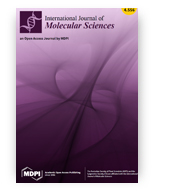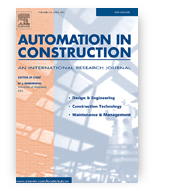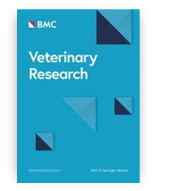Application of the TDR technique for the determination of the dynamics of the spatial and temporal distribution of water uptake by plant roots during injection irrigation
Grzegorz Janik, Izabela Kłosowicz, Amadeusz Walczak, Katarzyna Adamczewska-Sowińska, Anna Jama-Rodzeńska, Józef Sowiński
Agricultural Water Management
 The objective of the study was to develop a method for precise estimation of spatial and temporal variation in the elementary uptake of water by roots of an irrigated plant. The project focused on plants irrigated in a unique way, consisting in injection application of water directly within the reach of the root system. The analyses were conducted on the basis of a study performed in controlled conditions, on a cubicoid physical model with dimensions of 27.00 × 30.75 × 30.75 cm. The subject of the study was butterhead lettuce of the crisphead type (Lactuca sativa L. var. capitata L.). TDR sensors were installed in the substrate in which lettuce was cultivated, for the purpose of measurement of volumetric moisture. During the period of the experiment (28 days), the values of volumetric moisture were recorded at 10-minute intervals, at 12 points in each 4.5 cm layer of the substrate. The analyses demonstrated that the maximum (as an average for the entire volume of soil within a plant root system) intensity of elementary water uptake by lettuce (max I∆tc) was 0.0006 cm3cm−3h−1. This was observed at around midday and when the plant is being irrigated. The values of elementary intensity of water uptake by plant roots in each soil volume I∆ti,j,k were highly varied. At the point situated the closest to the nozzle of the irrigation injector the maximum value was 0.008 cm3cm−3h−1. In a soil volume situated only 5 cm further away the maximum value was already only 0.003 cm3cm−3h−1. In many elementary soil volumes did not pick those values up. Diurnal values of I∆ti,j,k calculated for an injection dose of 100 cm3 were, at the same points, lower than for the dose of 200 cm3. The presented method permits the acquisition of information on spatial variation and on the dynamics of the elementary intensity of water uptake by roots, which is necessary for precise determination of the location and dose of injection from the nozzle of a high-pressure irrigation injector.
The objective of the study was to develop a method for precise estimation of spatial and temporal variation in the elementary uptake of water by roots of an irrigated plant. The project focused on plants irrigated in a unique way, consisting in injection application of water directly within the reach of the root system. The analyses were conducted on the basis of a study performed in controlled conditions, on a cubicoid physical model with dimensions of 27.00 × 30.75 × 30.75 cm. The subject of the study was butterhead lettuce of the crisphead type (Lactuca sativa L. var. capitata L.). TDR sensors were installed in the substrate in which lettuce was cultivated, for the purpose of measurement of volumetric moisture. During the period of the experiment (28 days), the values of volumetric moisture were recorded at 10-minute intervals, at 12 points in each 4.5 cm layer of the substrate. The analyses demonstrated that the maximum (as an average for the entire volume of soil within a plant root system) intensity of elementary water uptake by lettuce (max I∆tc) was 0.0006 cm3cm−3h−1. This was observed at around midday and when the plant is being irrigated. The values of elementary intensity of water uptake by plant roots in each soil volume I∆ti,j,k were highly varied. At the point situated the closest to the nozzle of the irrigation injector the maximum value was 0.008 cm3cm−3h−1. In a soil volume situated only 5 cm further away the maximum value was already only 0.003 cm3cm−3h−1. In many elementary soil volumes did not pick those values up. Diurnal values of I∆ti,j,k calculated for an injection dose of 100 cm3 were, at the same points, lower than for the dose of 200 cm3. The presented method permits the acquisition of information on spatial variation and on the dynamics of the elementary intensity of water uptake by roots, which is necessary for precise determination of the location and dose of injection from the nozzle of a high-pressure irrigation injector.
DOI: 10.1016/j.agwat.2021.106911
Bacteria Single-Cell and Photosensitizer Interaction Revealed by Quantitative Phase Imaging
Igor Buzalewicz, Agnieszka Ulatowska-Jarża, Aleksandra Kaczorowska, Marlena Gąsior-Głogowska, Halina Podbielska, Magdalena Karwańska, Alina Wieliczko, Anna Matczuk, Katarzyna Kowal, Marta Kopaczyńska
International Journal of Molecular Sciences
 Quantifying changes in bacteria cells in the presence of antibacterial treatment is one of the main challenges facing contemporary medicine; it is a challenge that is relevant for tackling issues pertaining to bacterial biofilm formation that substantially decreases susceptibility to biocidal agents. Three-dimensional label-free imaging and quantitative analysis of bacteria–photosensitizer interactions, crucial for antimicrobial photodynamic therapy, is still limited due to the use of conventional imaging techniques. We present a new method for investigating the alterations in living cells and quantitatively analyzing the process of bacteria photodynamic inactivation. Digital holographic tomography (DHT) was used for in situ examination of the response of Escherichia coli and Staphylococcus aureus to the accumulation of the photosensitizers immobilized in the copolymer revealed by the changes in the 3D refractive index distributions of single cells. Obtained results were confirmed by confocal microscopy and statistical analysis. We demonstrated that DHT enables real-time characterization of the subcellular structures, the biophysical processes, and the induced local changes of the intracellular density in a label-free manner and at sub-micrometer spatial resolution.
Quantifying changes in bacteria cells in the presence of antibacterial treatment is one of the main challenges facing contemporary medicine; it is a challenge that is relevant for tackling issues pertaining to bacterial biofilm formation that substantially decreases susceptibility to biocidal agents. Three-dimensional label-free imaging and quantitative analysis of bacteria–photosensitizer interactions, crucial for antimicrobial photodynamic therapy, is still limited due to the use of conventional imaging techniques. We present a new method for investigating the alterations in living cells and quantitatively analyzing the process of bacteria photodynamic inactivation. Digital holographic tomography (DHT) was used for in situ examination of the response of Escherichia coli and Staphylococcus aureus to the accumulation of the photosensitizers immobilized in the copolymer revealed by the changes in the 3D refractive index distributions of single cells. Obtained results were confirmed by confocal microscopy and statistical analysis. We demonstrated that DHT enables real-time characterization of the subcellular structures, the biophysical processes, and the induced local changes of the intracellular density in a label-free manner and at sub-micrometer spatial resolution.
DOI:10.3390/ijms22105068
Detection of crane track geometric parameters using UAS
Kazimierz Ćmielewski, Piotr Gołuch, Janusz Kuchmister, Izabela Wilczyńska, Bartłomiej Ćmielewski, Olga Grzeja
International Journal of Molecular Sciences
 This paper presents the results of experimental and survey work on the application of Unmanned Aircraft System (UAS) photogrammetry to determine the geometric parameters that describe crane ground rails. The goal was to achieve highly accurate measurements (millimeter accuracy) to determine the geometric parameters of elongated engineering objects (of significant dimensions, such as a crane track) up to several hundred meters long and several dozen meters wide. The method of processing images taken with the use of UAS depends on combining images taken at different flying heights and the use of code targets (of appropriately selected sizes), enabling the automatic measurement of controlled points representing the object. The method of fixing the plates with the code target on the crane track is described. Experimental field work was conducted using a section of crane track of length 35 m whose span was 6.000 m. The proposed method features high accuracy, takes less time and is therefore less expensive than other known methods.
This paper presents the results of experimental and survey work on the application of Unmanned Aircraft System (UAS) photogrammetry to determine the geometric parameters that describe crane ground rails. The goal was to achieve highly accurate measurements (millimeter accuracy) to determine the geometric parameters of elongated engineering objects (of significant dimensions, such as a crane track) up to several hundred meters long and several dozen meters wide. The method of processing images taken with the use of UAS depends on combining images taken at different flying heights and the use of code targets (of appropriately selected sizes), enabling the automatic measurement of controlled points representing the object. The method of fixing the plates with the code target on the crane track is described. Experimental field work was conducted using a section of crane track of length 35 m whose span was 6.000 m. The proposed method features high accuracy, takes less time and is therefore less expensive than other known methods.
DOI:10.1016/j.autcon.2021.103751
Morphological changes in bitches endometrium affected by cystic endometrial hyperplasia - pyometra complex - the value of histopathological examination
Magdalena Woźna-Wysocka, Marta Rybska, Beata Błaszak, Bartłomiej Jaśkowski, Magdalena Kulus, Jędrzej M. Jaśkowski
BMC Veterinary Research
 Background: Cystic endometrial hyperplasia-pyometra complex (CEH-P) is one of the most common uteropathies in bitches. In diseases with mild or obscure clinical signs and normal uterine size, a diagnosis based on a clinical assessment might be incorrect. The main aim of the research was to determine the morphological variables accompanying uterine diseases in bitches in microscopic evaluation. Consequently, the obtained results can be used to create a new classification system for uterine pathological changes during the development of the CEH-P, diagnosed by microscopic examination in bitches. Material for the study consisted of the uteri of 120 female dogs, aged 1–16 years, obtained during routine ovariohysterectomies. Macroscopic observation after a longitudinal incision of the uterine horns, allowed a preliminary classification of the uteri into research groups: control group (physiological uteri), and groups GI-III uteri collected form bitches with varying degrees of endometrial pathology. These preliminary classifications were then verified by histological analysis (H&E stain). Results: The obtained results made it possible to determine and describe the prevalence (%) of pathological changes characteristic of the analyzed uterine diseases in the examined bitches. Histopathological analyses that were conducted have confirmed preliminary macroscopic evaluation for the control group, group GII (CEH), and group GIII (pyometra). In the uteri of the GI group, a severe congestion of the endometrium has been observed – this is typical of inflammation – which was not confirmed during histopathological examinations. However, these examinations revealed acute endometrial haemorrhage of varying severity. Conclusions: Early reproduction disorders in bitches are, in general, not confirmed by clinical signs in the examined animals. The results show that during classification of typical morphological changes in the endometrium over the development of the CEH-P complex in bitches microscopic examinations are required. The obtained results indicate a frequent lack of consistency in the macroscopic assessment and histological analysis of the endometrium, observed in the analyzed uterine diseases, which in most cases is not followed by clinical symptoms. The presented classification of uterine diseases may be useful as a diagnostic tool in reproductive disorders in bitches and in examination in the field of basic research.
Background: Cystic endometrial hyperplasia-pyometra complex (CEH-P) is one of the most common uteropathies in bitches. In diseases with mild or obscure clinical signs and normal uterine size, a diagnosis based on a clinical assessment might be incorrect. The main aim of the research was to determine the morphological variables accompanying uterine diseases in bitches in microscopic evaluation. Consequently, the obtained results can be used to create a new classification system for uterine pathological changes during the development of the CEH-P, diagnosed by microscopic examination in bitches. Material for the study consisted of the uteri of 120 female dogs, aged 1–16 years, obtained during routine ovariohysterectomies. Macroscopic observation after a longitudinal incision of the uterine horns, allowed a preliminary classification of the uteri into research groups: control group (physiological uteri), and groups GI-III uteri collected form bitches with varying degrees of endometrial pathology. These preliminary classifications were then verified by histological analysis (H&E stain). Results: The obtained results made it possible to determine and describe the prevalence (%) of pathological changes characteristic of the analyzed uterine diseases in the examined bitches. Histopathological analyses that were conducted have confirmed preliminary macroscopic evaluation for the control group, group GII (CEH), and group GIII (pyometra). In the uteri of the GI group, a severe congestion of the endometrium has been observed – this is typical of inflammation – which was not confirmed during histopathological examinations. However, these examinations revealed acute endometrial haemorrhage of varying severity. Conclusions: Early reproduction disorders in bitches are, in general, not confirmed by clinical signs in the examined animals. The results show that during classification of typical morphological changes in the endometrium over the development of the CEH-P complex in bitches microscopic examinations are required. The obtained results indicate a frequent lack of consistency in the macroscopic assessment and histological analysis of the endometrium, observed in the analyzed uterine diseases, which in most cases is not followed by clinical symptoms. The presented classification of uterine diseases may be useful as a diagnostic tool in reproductive disorders in bitches and in examination in the field of basic research.
DOI:10.1186/s12917-021-02875-0
Primary Human Cardiomyocytes and Cardiofibroblasts Treated with Sera from Myocarditis Patients Exhibit an Increased Iron Demand and Complex Changes in the Gene Expression
Kamil Kobak, Paweł Franczuk, Justyna Schubert, Magdalena Dzięgała, Monika Kasztura, Michał Tkaczyszyn, Marcin Drozd, Aneta Kosiorek, Liliana Kiczak, Jacek Bania, Piotr Ponikowski, Ewa A. Jankowska
Cells
 Cardiac fibroblasts and cardiomyocytes are the main cells involved in the pathophysiology of myocarditis (MCD). These cells are especially sensitive to changes in iron homeostasis, which is extremely important for the optimal maintenance of crucial cellular processes. However, the exact role of iron status in the pathophysiology of MCD remains unknown. We cultured primary human cardiomyocytes (hCM) and cardiofibroblasts (hCF) with sera from acute MCD patients and healthy controls to mimic the effects of systemic inflammation on these cells. Next, we performed an initial small-scale (n = 3 per group) RNA sequencing experiment to investigate the global cellular response to the exposure on sera. In both cell lines, transcriptomic data analysis revealed many alterations in gene expression, which are related to disturbed canonical pathways and the progression of cardiac diseases. Moreover, hCM exhibited changes in the iron homeostasis pathway. To further investigate these alterations in sera-treated cells, we performed a larger-scale (n = 10 for controls, n = 18 for MCD) follow-up study and evaluated the expression of genes involved in iron metabolism. In both cell lines, we demonstrated an increased expression of transferrin receptor 1 (TFR1) and ferritin in MCD serum-treated cells as compared to controls, suggesting increased iron demand. Furthermore, we related TFR1 expression with the clinical profile of patients and showed that greater iron demand in sera-treated cells was associated with higher inflammation score (interleukin 6 (IL-6), C-reactive protein (CRP)) and advanced neurohormonal activation (NT-proBNP) in patients. Collectively, our data suggest that the malfunctioning of cardiomyocytes and cardiofibroblasts in the course of MCD might be related to alterations in the iron homeostasis.
Cardiac fibroblasts and cardiomyocytes are the main cells involved in the pathophysiology of myocarditis (MCD). These cells are especially sensitive to changes in iron homeostasis, which is extremely important for the optimal maintenance of crucial cellular processes. However, the exact role of iron status in the pathophysiology of MCD remains unknown. We cultured primary human cardiomyocytes (hCM) and cardiofibroblasts (hCF) with sera from acute MCD patients and healthy controls to mimic the effects of systemic inflammation on these cells. Next, we performed an initial small-scale (n = 3 per group) RNA sequencing experiment to investigate the global cellular response to the exposure on sera. In both cell lines, transcriptomic data analysis revealed many alterations in gene expression, which are related to disturbed canonical pathways and the progression of cardiac diseases. Moreover, hCM exhibited changes in the iron homeostasis pathway. To further investigate these alterations in sera-treated cells, we performed a larger-scale (n = 10 for controls, n = 18 for MCD) follow-up study and evaluated the expression of genes involved in iron metabolism. In both cell lines, we demonstrated an increased expression of transferrin receptor 1 (TFR1) and ferritin in MCD serum-treated cells as compared to controls, suggesting increased iron demand. Furthermore, we related TFR1 expression with the clinical profile of patients and showed that greater iron demand in sera-treated cells was associated with higher inflammation score (interleukin 6 (IL-6), C-reactive protein (CRP)) and advanced neurohormonal activation (NT-proBNP) in patients. Collectively, our data suggest that the malfunctioning of cardiomyocytes and cardiofibroblasts in the course of MCD might be related to alterations in the iron homeostasis.
DOI:10.3390/cells10040818









